This post contains affiliate links.
Discover the art of positioning your hummingbird feeder to cultivate a bustling hub for these iridescent birds. Learn the essential tips for the perfect placement that maximizes visibility for the hummingbirds and your viewing pleasure, while ensuring their safety.
From avoiding problematic areas that comprise their wellbeing to embracing locations that support their natural behavior, join me as I delve into the strategic distinction of where to hang—and where not to hang—your hummingbird feeder.
Where Should You Not Place a Hummingbird Feeder?
When it comes to creating a hummingbird haven in your garden, knowing where not to hang feeders is just as important as finding the perfect spot. To ensure the safety and comfort of these iridescent visitors, there are certain areas you must avoid.
Firstly, do not place feeders near outdoor lighting; the artificial light can disrupt the hummingbirds’ natural feeding patterns. Additionally, do not hang feeders where they are easily accessible by predators, such as cats or large birds.
Read my article: Hidden Dangers: Animals That Hunt Hummingbird

are hummingbirds biggest predator.
Furthermore, do not position the feeder near windows where birds could collide with the glass, potentially leading to injury. Feeders should not be placed next to busy paths or areas with an abundance of human traffic, as this stresses the birds.
Avoid windy locations, they cause feeders to swing or spill, deterring hummingbirds from visiting.
It is crucial not to hang your feeder too close to nest boxes or dense foliage, where aggressive birds may claim the area and prevent others from feeding. Do not hang feeders where ants or bees can easily reach them, as their presence can obstruct hummingbirds from accessing the nectar.
Read my article: Bees On My Hummingbird Feeder: (9 Tips To Get Rid of Them)
Lastly, never underestimate the importance of cleanliness; feeders should not be left dirty, as mold and bacteria can harm hummingbirds. Change the nectar frequently and clean the feeders to prevent this issue.
Read my article: Hummingbird Diseases: From Pathogens to Prevention
Taking these precautions will ensure that the place where you hang your hummingbird feeder is just right, offering a safe and peaceful spot for these delightful creatures to refuel and thrive.
Why Hummingbird Feeder Placement Matters
When you strive to attract hummingbirds, understanding where to hang hummingbird feeders significantly impacts both the safety of these hummingbirds and your viewing pleasure.
The common hummingbird, delicate yet dynamic, will become a regular visitor to your garden with proper feeder placement. Hanging feeders in spots that prevent them from becoming easy targets for predators, while offering a clear flight path, helps promote a secure environment.
When attracting hummingbirds, it is crucial to consider the feeder’s exposure to the elements; by keeping your feeder in a covered area or shaded from the sun, this reduces the nectar from quickly spoiling and fermenting
Read my article: What is the Black Stuff on my Hummingbird Feeder?
The presence of brightly-colored feeders, far from human activity and loud noises, plays a significant role in drawing hummingbirds into your yard, making your efforts at attracting hummingbirds successful. Consider proximity to nesting hummingbirds as well; these avian architects prefer to be close, but not too close, to their food sources. A feeder hung about 10-15 feet from cover gives them the advantage to easily retreat if they feel threatened.
Read my article: Hummingbird Parents: (Mating to Nesting)
When checking your feeders, make sure it is in a place that allows for easy access to cleaning and refilling—hygiene is vital for these birds’ health. In addition, strategically hanging your feeders prevent unwanted pests and deter crawling insects that are unwelcome guests.
Read my article: Lurking Dangers: Insects That Prey on Hummingbirds
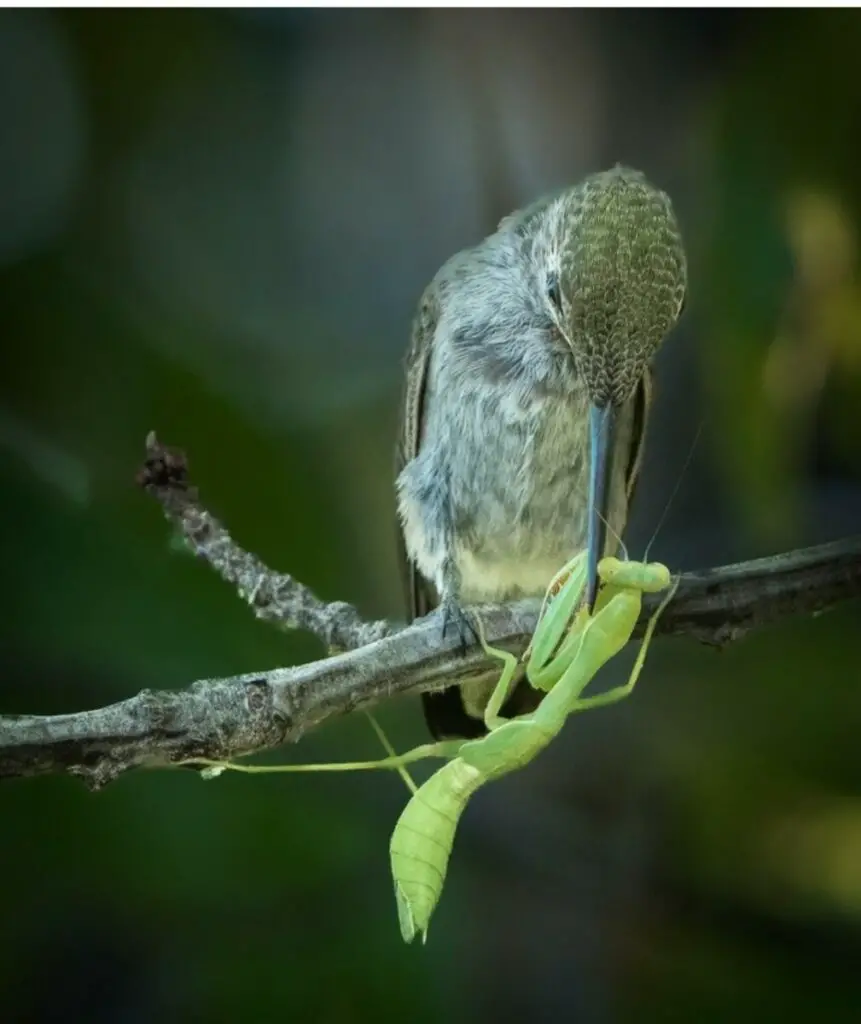
Photo by: Bob Free
Remember that hummingbirds constantly scout for safe, reliable feeding stations. A well-thought-out feeder placement establishes your garden as a favorite location on their foraging route. With these tips in mind, you will not only bring joy to your own life by observing these fascinating creatures but also provide a supportive habitat for the aerial acrobatics of hummingbirds.
TIP 1: Hang a Hummingbird Feeder Where You Can Observe Their Beauty
When you are setting up a haven for these flying gems, you will want to ensure that it is visible to you. Hummingbird feeders should be situated where you can easily marvel at the vibrant spectacle without interruption.
You will want to place the feeder in a location where you can observe from a cozy nook or where you frequently relax. I recommend hanging a feeder alongside brightly colored blooms that naturally draw hummingbirds.
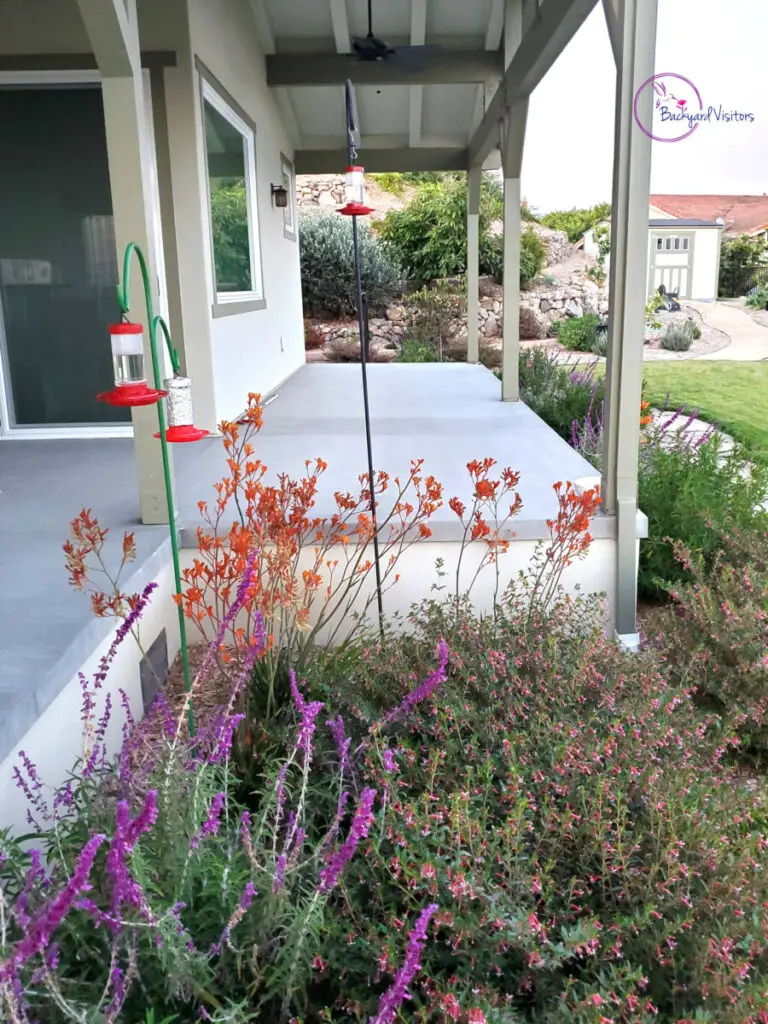
Pink Cigar Plant – (Cuphea ‘Kristen’s Delight’)
Kangaroo Paw – (Anigozanthos)
As a hummingbird enthusiast, I know there is nothing quite like seeing these iridescent feathers catch the sun. I watch from a window or from my patio as they hover and dance, sipping nectar from flower to flower in between visiting hummingbird feeders. This gives me a mesmerizing view of their gorgeous features and acrobatic agility.
The experience of sighting hummingbirds and their iridescent gorgets helps when feeders are placed where the sun is not behind them as you will lose the brilliance of their feathers. Find a location where the sun illuminates them from the sides.
Read my article: Hummingbird Gorgets Explained: The Complete Story
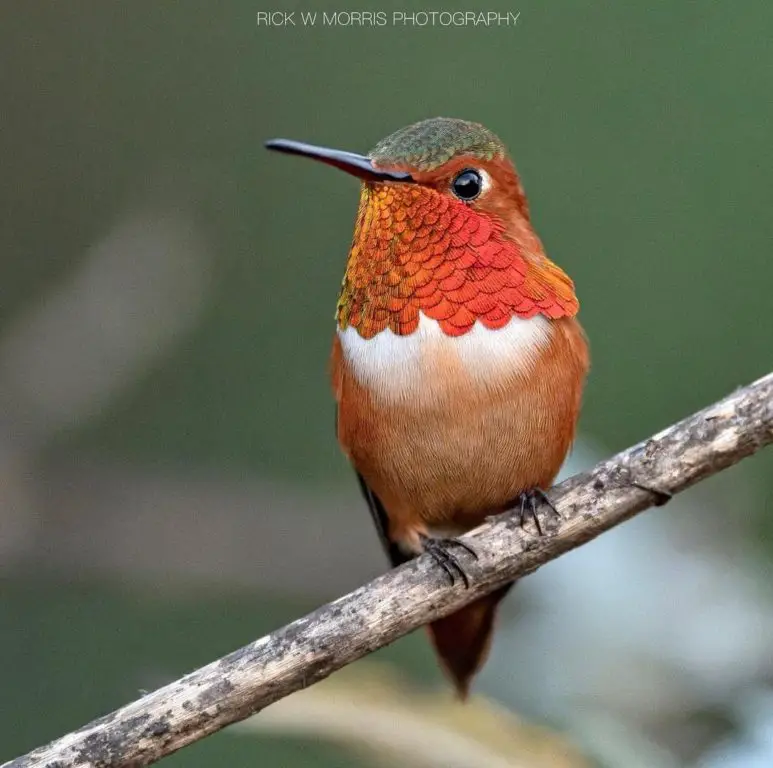
Photo by: IntheWildwithRick
I have observed that mornings or late afternoons are when I get the best light play on their feathers, enhancing my viewing pleasure.
In conclusion, it is clear why you should hang your feeder in a location optimal for you and your appreciation for nature’s marvels. You and your feeder play integral roles in supporting and enjoying these delightful creatures. Go ahead and strategically place your hummingbird feeder where you can bask in their exquisite presence every day.
Tips for Placement of Hummingbird Feeders to Attract Them
Attracting hummingbirds to your backyard often hinge on the strategic placing of feeders filled with delectable sugar water.
To maximize the allure of your bird feeders, first consider visibility. Place your hummingbird feeder in a location that is easily seen by these aerial acrobats as they zoom through your garden. An open space surrounded by flowering plants will not only grab their attention but complement the nectar they tirelessly seek.
Ensuring your feeder is in the shade helps to keep the nectar from spoiling, a key element many enthusiasts overlook in their feeder review.
Read my article: Should Hummingbird Feeders Be in Sun or Shade?
Accessibility is equally important when attracting hummingbirds. Keep feeders away from high-traffic areas, both human and predatory animals alike, but close enough to natural perches such as branches or bushes. This offers these tiny birds an inviting respite to fuel up on nectar without the threat of disturbance.
Additionally, placing feeders at varying heights attract more hummingbirds, as they have their preferences and territories within their aerial domain.
Read my article: How High Should a Hummingbird Feeder Be?
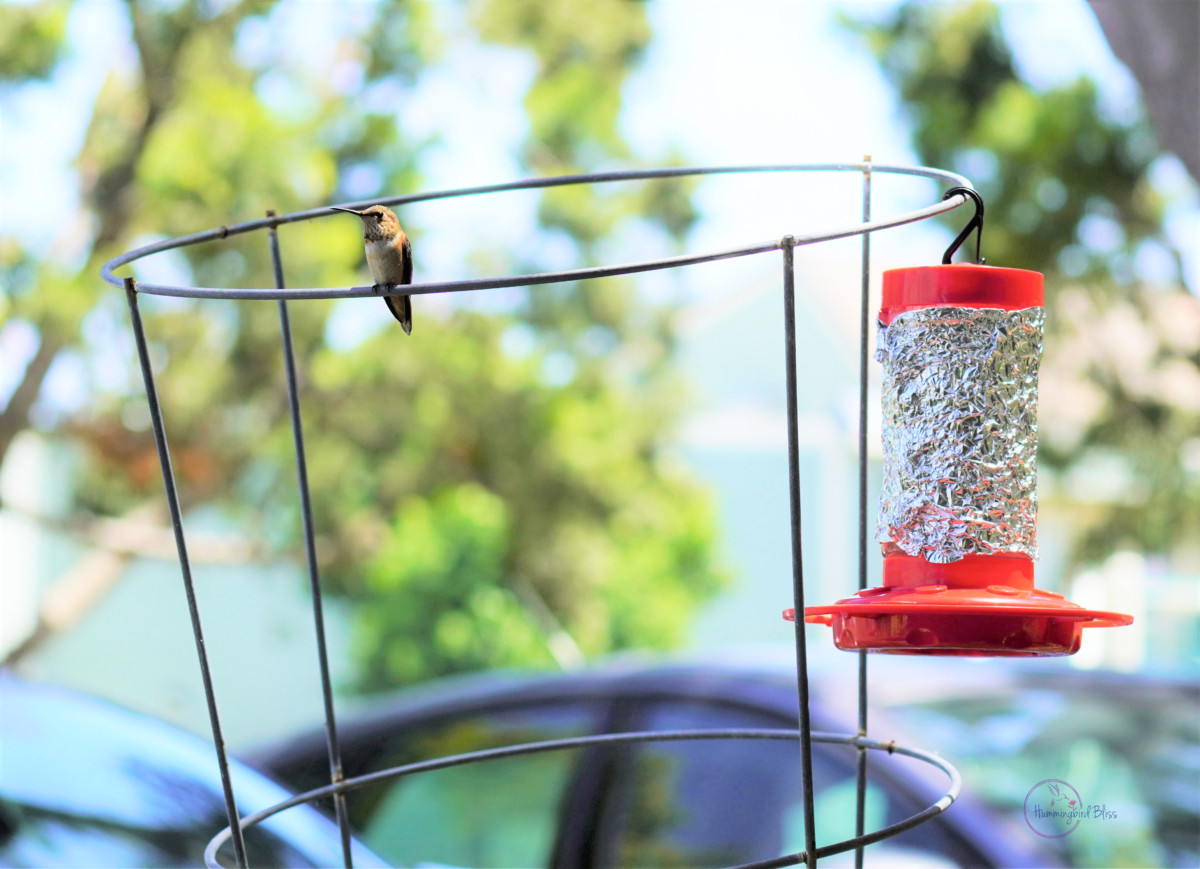
To further entice these miniature wonders, maintaining a consistent supply of fresh nectar is crucial. Regular feeder maintenance and cleanup prevent the buildup of harmful bacteria, ensuring a hygienic dining experience for visiting hummingbirds.
Read my article: Forget Commercial Hummingbird Food, Try Making Homemade Nectar
It is also beneficial to stage multiple feeders around your yard to reduce competition and offer ample dining options. Be mindful of the seasons too; as temperatures rise and fall, the concentration of sugar water may need adjustment to keep it flowing and appealing.
Lastly, remember that patience is key. It may take time for hummingbirds to find and frequent your feeders regularly. Stay vigilant and adapt your strategies by observing their behavior and preferences. A successful feeder placement means creating a sanctuary where hummingbirds cannot resist visiting and where their beauty can be most appreciated.
TIP 2: Ensure Hummingbird Feeders Should Be Near Natural Shelter
As an enthusiast dedicated to attracting hummingbirds, it is crucial to hang hummingbird feeders in an environment that mimics their natural habitat. Placing feeders should be done with care to ensure these vibrant birds have quick access to cover. The feeder should be positioned near natural shelter, such as shrubs or trees. This strategic placement not only provides necessary protection for these delicate creatures but also encourages nesting hummingbirds to feel secure in the vicinity of your feeder.
Read my article: Baby Hummingbirds: (Egg to Fledgling)
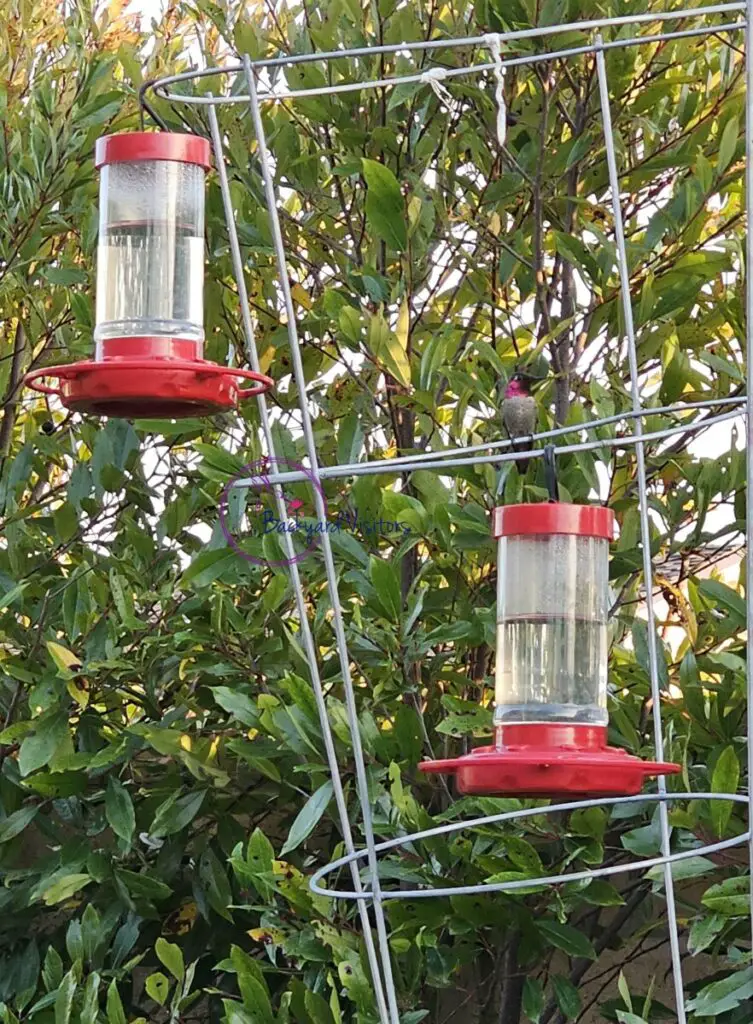
By hanging feeders close to natural shelter, you will cater to the hummingbirds’ instinctive needs for quick escape routes from predators. This emphasizes the point and significance of feeder placement near natural shelter for any hummingbird-friendly garden.
When you hang feeders within your line of sight but still in the embrace of nature’s canopy, you optimize the viewing experience without disturbing the hummingbirds’ natural behaviors.
Remember, the goal is to provide a safe haven for these nectar-loving visitors while also ensuring that the feeders should not be placed too close to windows or busy areas that lead to collisions or undue stress.
It is about finding the perfect balance between visibility and seclusion. Thus, choosing the right area where to hang feeders in proximity to natural shelter is a decisive step in nesting hummingbirds choosing your yard as their new favorite dining area.
By following this tip, your feeder will soon become a bustling hub for local hummingbirds, providing endless opportunities to marvel at their beauty and contribute to their conservation.
Best Places to Hang Hummingbird Feeders in Your Yard
Discovering the perfect spot to hang a hummingbird feeder ensures these aerial acrobats frequent your garden with regularity. Ideally, place your hummingbird feeder where it is shielded from strong winds to prevent swinging and spilling of nectar, which can discourage visits.
A strategic location is often under a tree branch where they can zip in and out with ease while feeling secure from predators. It is essential to consider proximity to flowers and plants, as hummingbirds are naturally drawn to areas with abundant floral resources. Thus, you will amplify your chances of attracting them if your feeder is nestled among nectar-bearing blossoms.
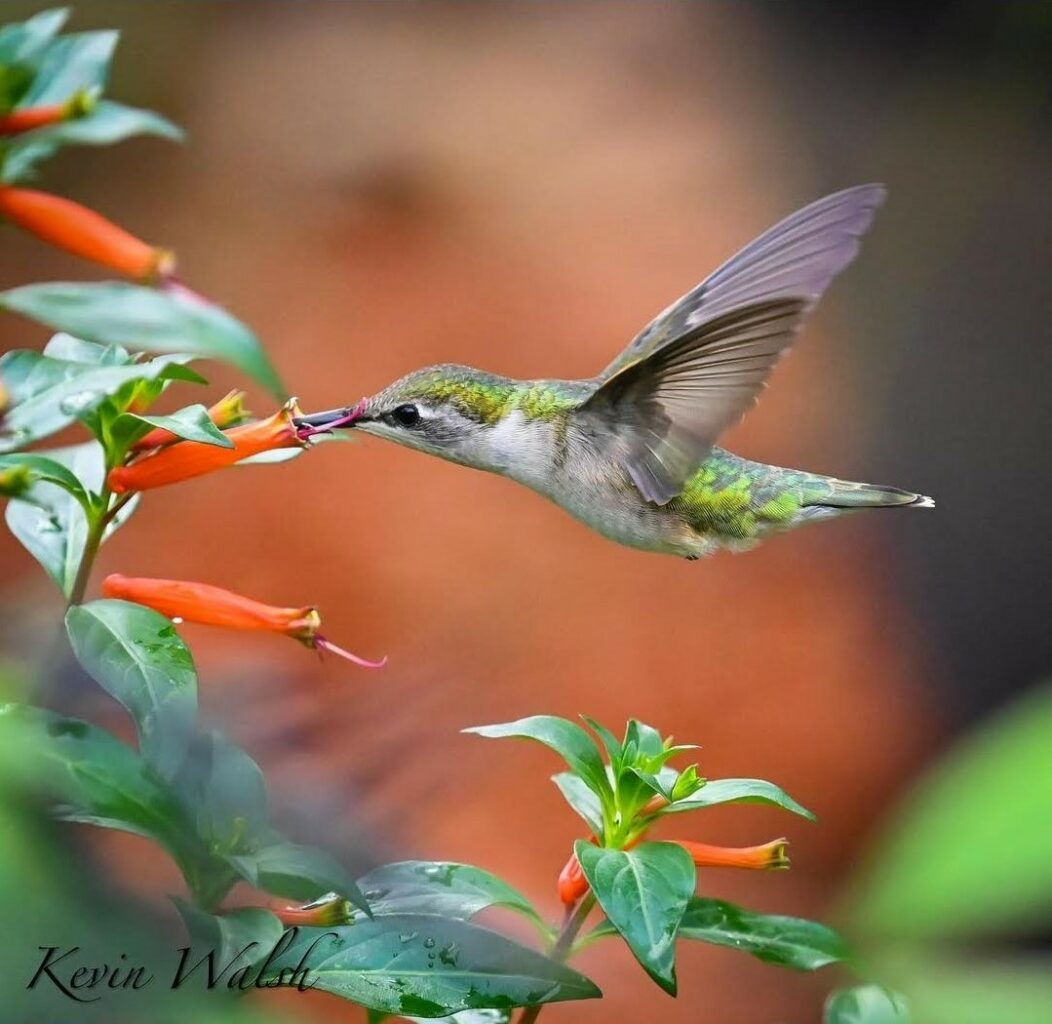
Cigar Plant – (Cuphea ignea)
Photo by: Kevin Walsh
Hummingbird feeders should be visible so you can enjoy their vibrant plumage and spirited antics. Hang your feeders near bushes and flowering plants where their beauty is observed without interruption.
Remember, accessibility is key, and a hummingbird feeder placed too high can make maintenance a hassle. Nevertheless, keep it out of reach from felines and other predators that might harm these delicate flyers. A height of about five feet off the ground is ideal.
Read my article: 10 Common Things That Kill Hummingbirds
Do not forget that your hummingbird feeder needs to be in a spot that is convenient for you to clean and refill regularly. Hygiene is paramount to prevent the spread of diseases amongst the hummingbird population.
Lastly, multiple hummingbird feeders spaced throughout your yard prevent territorial disputes and provide ample feeding opportunities for all visitors.
Read my article: Managing Bully Birds at Feeders
With these considerations in mind, you are bound to create a buzzing hub for these glittering birds, turning your outdoor space into a hummingbird haven.
TIP 3: Hummingbird Feeders Should Be Protected from Predators
Hang hummingbird feeders wisely to prevent predatory attacks. The importance of feeder placement is important to protect your backyard visitors. It is vital to consider the safety of these nectar-loving birds while enjoying their aerial acrobatics.
Feeders should be at a height out of reach from neighborhood cats and other ground predators. Hanging them at least five feet from the ground, combined with a feeder pole equipped with a baffle, will deter most climbers.
In addition, the feeder should be away from dense foliage where sneaky predators could lurk undetected. I know they are surprisingly adept at ambushing unsuspecting hummingbirds mid-meal. Moreover, strategic placement of feeders allow for a quick escape route, if the birds detect danger.
Ensuring your feeder is protected from predators does not merely mean safeguarding them from land threats. Always consider aerial predators, such as hawks and larger birds, that may view your frequented feeder as a bird buffet.
Read my article: On the Menu: Hummingbirds’ Shocking Bird Predators
Hanging hummingbird feeders with ample open space allows the hummingbirds to spot potential threats from above with enough time to whirl away to safety. Bird’s-eye coverage, so to speak, is essential for their security, and you will gain peace of mind knowing they are safer because of your thoughtful positioning.
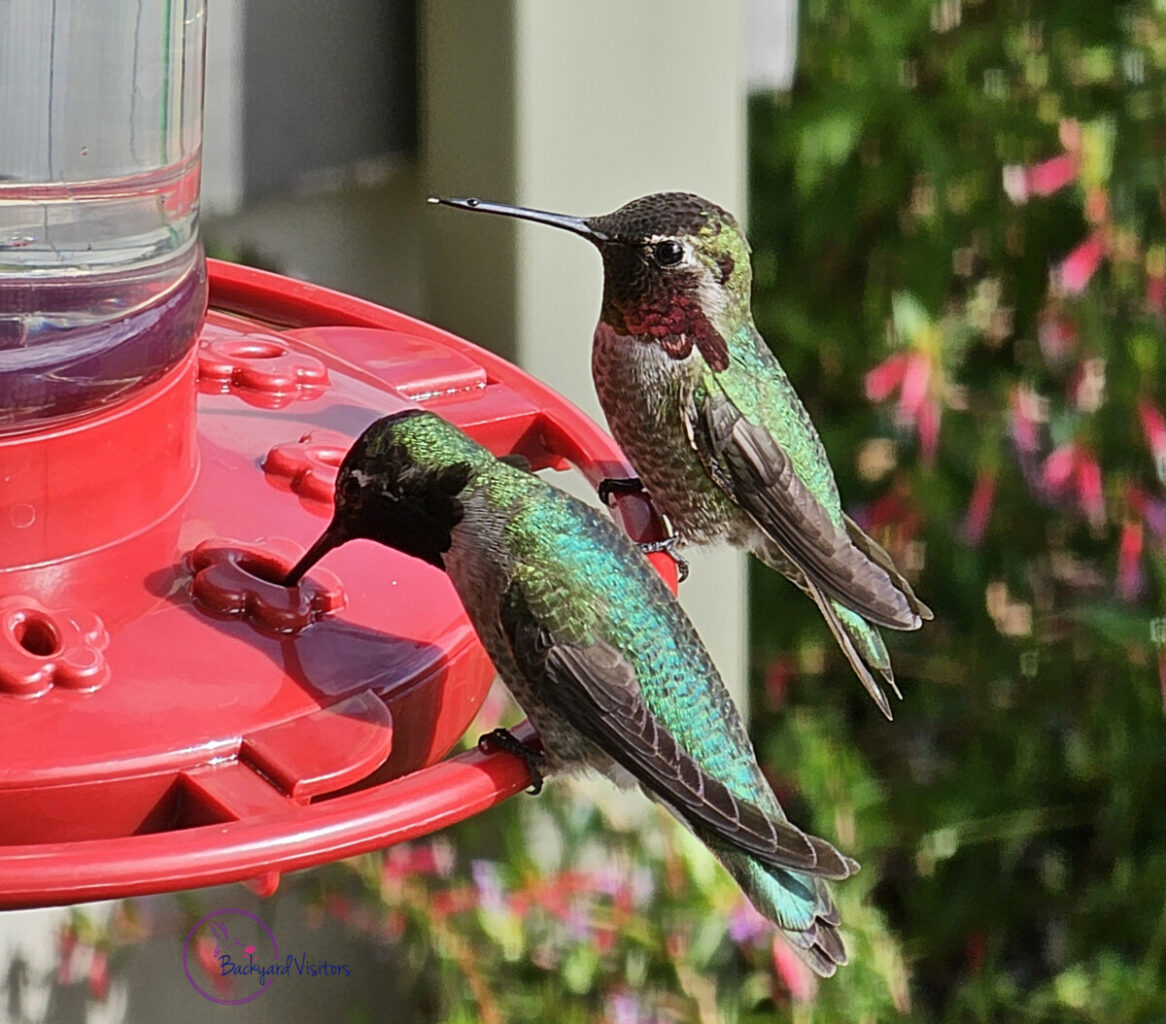
Reflect on these tips, ensure your feeders are in the most secure spots and relish the sight of hummingbirds flitting about without fear. Remember, placing your feeders should be both about attracting hummingbirds and providing them protection against the ever-present threats in nature.
How to Hang a Hummingbird Feeder with Sugar Water Safely
When you are eager to delight in the mesmerizing twirls and dashes of hummingbirds, knowing how to hang your bird feeders properly is as essential as the sugar water recipe.
A well-placed hummingbird feeder not only ensures the safety of these enchanting birds but also maximizes your viewing pleasure. For a successful feeder review, always choose a spot that mimics the natural feeding patterns of hummingbirds. This means placing feeders in a quiet, sheltered area away from high-traffic zones to provide a serene dining experience for our feathered friends.
While feeding hummingbirds, ensure that the sugar water-filled feeder is securely hung to prevent spillage and deter ants or bees, which can distract or harm the birds.
To hang hummingbird feeders safely, consider height – it should be out of reach of predators but low enough for you to refill smoothly. Use a stable, robust hook that will not bend under the feeder’s weight when it is full of nectar.
Read my article: How High Should a Hummingbird Feeder Be?
If your environment allows, placing feeders near a source of natural shelter, such as dense foliage or a brush pile, will provide the ideal refuge for the hummingbirds against predators and harsh weather.
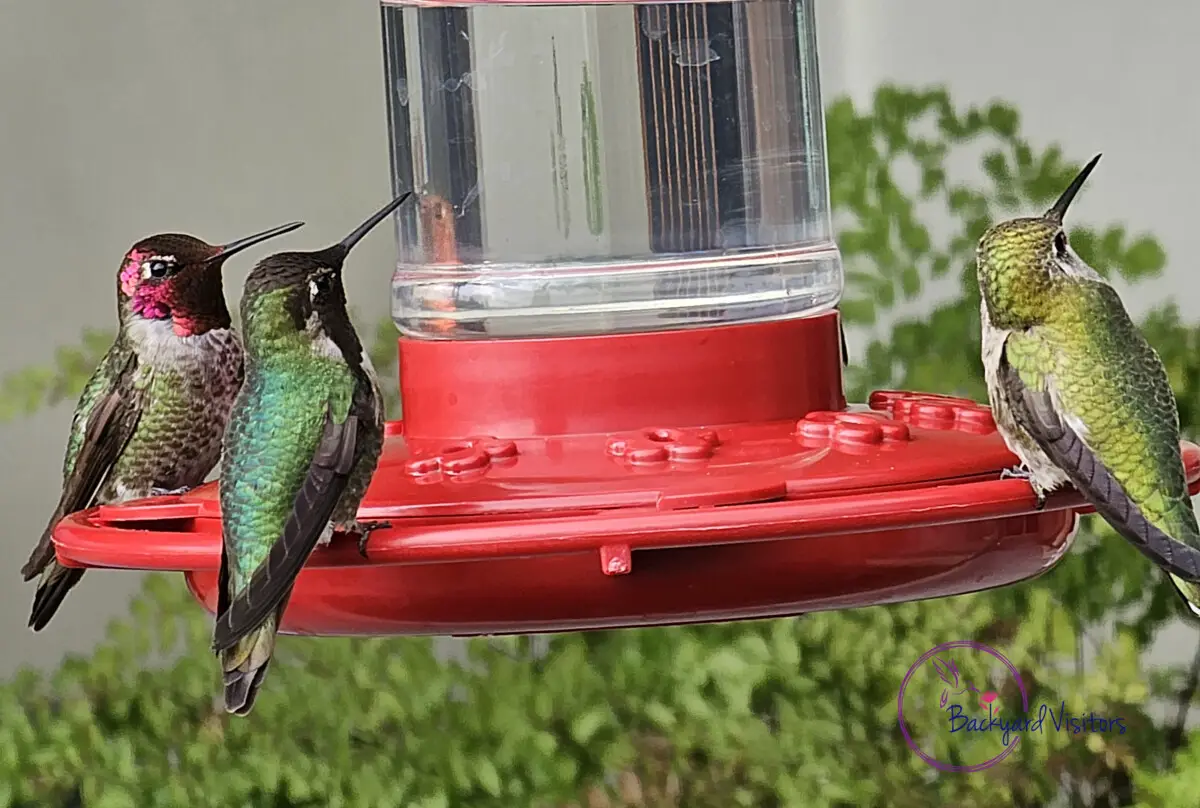
Moreover, the clear visibility of feeders is crucial for attracting hummingbirds; therefore, choose a sunlit area where the reflections from the nectar catch their eye. Do remember, however, to safeguard the sugar water from becoming too hot, which could spoil the nectar and harm the birds.
Read my article: What is the Black Stuff on my Hummingbird Feeder?
In this vein, placing feeders under a shade during peak sun hours helps to maintain fresh nectar throughout the day. Most importantly, regular cleaning of the bird feeders is non-negotiable to prevent mold and bacteria, which can otherwise pose risks to the hummingbird population.
Read my article: Should Hummingbird Feeders Be in Sun or Shade?
TIP 4: Regular Maintenance of Hanging Bird Feeders Is Crucial
Attending the maintenance of hanging bird feeders is not just about cleanliness; it is a vital step in ensuring the safety and health of your visiting hummingbirds.
When you hang a feeder, make sure to completely commit to a regular schedule of maintaining it properly. Without fail, every feeder you hang becomes a responsibility. Regularly cleaning and refilling your feeder helps prevent the growth of mold and bacteria that is harmful to hummingbirds. It is best to hang your feeder in a spot that is easy for you to access for these maintenance tasks.
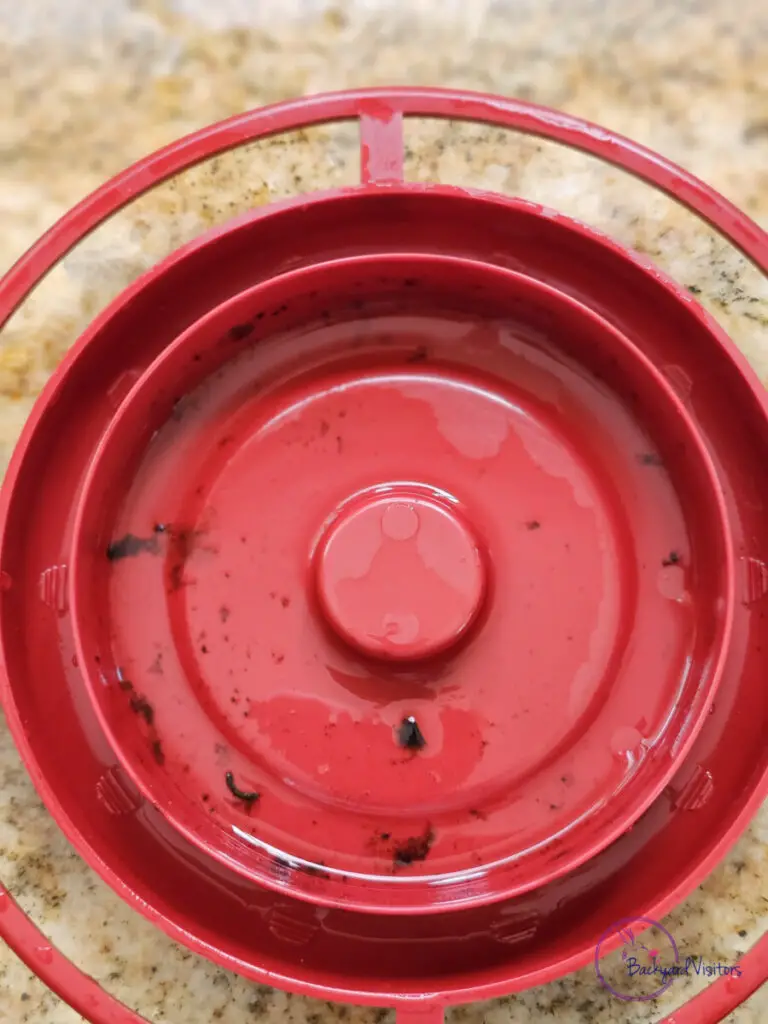
In other words, when you hang a feeder, anticipate the need to check it frequently for any signs of wear or damage. Leaks or cracks in your feeder attract unwanted pests and cause a mess—it is essential to hang your hummingbird feeder where these issues are quickly addressed.
Do not hang and forget your hummingbird feeders. Maintenance and supervision are important. Choose a feeder designed for easy dismantling and thorough cleaning.

Note: The opening of the feeders are wide for easy cleaning access.
Last but not least, do not undermine the importance of seasonal maintenance. If you are wondering where to hang your feeder as the seasons change, remember that the location will need to be adjusted based on weather conditions.
For instance, in a colder season, hang the feeder in a sunlit area to prevent the sugar water from freezing. Alternatively, in extremely hot conditions, hang the feeder in a shaded area to keep the nectar from fermenting too quickly.
Read my article: Do Hummingbirds Prefer Warm or Cold Nectar?
The commitment to hang a feeder is synonymous with a commitment to the well-being of hummingbirds, ensuring that these enchanting creatures have a safe and reliable food source in your yard.
Check out my other posts on Hummingbird Questions
Frequently Asked Questions
Q: Where should I not place my hummingbird feeder?
A: Avoid hanging your feeder near outdoor lighting, in areas accessible by predators like cats or large birds, windy spots that cause spillage, close to windows, by busy paths, near nest boxes or dense foliage, and where ants or bees can reach. Also, keep feeders clean and frequently change the nectar to prevent harm to hummingbirds.
Q: What is the best location for a hummingbird feeder in my yard?
A: Choose a quiet, sheltered location away from high traffic and predators, near natural shelters like shrubs or trees, and about 10-15 feet from cover. Ensure the feeder is visible to both you and the hummingbirds, preferably near vibrant flowers and in a spot that allows for easy maintenance.
Q: How can I maximize my chances of attracting hummingbirds to my feeder?
A: Place the feeder in an open area that’s easily visible, surrounded by flowering plants, in the shade to prevent nectar spoilage, and near natural perches. Provide multiple feeders at various heights to cater to different hummingbird preferences, and maintain a consistent supply of fresh nectar.
Q: How high should I hang my hummingbird feeder?
A: Hang feeders at a height that prevents predator access, generally about five feet above the ground. Make sure it is also convenient for you to clean and refill, and consider hanging it under a tree branch for added protection.
Q: How do I maintain my hummingbird feeder for the birds’ safety and health?
A: Regularly clean and refill your feeder to prevent mold and bacteria growth. Hang it in an easily accessible spot for maintenance and inspect it frequently for damage. Adjust feeder placement based on the seasons to prevent nectar spoilage from temperature extremes.
Happy Hummingbird Watching!
Backyard Visitors participates in affiliate programs which compensate us for referring traffic.

